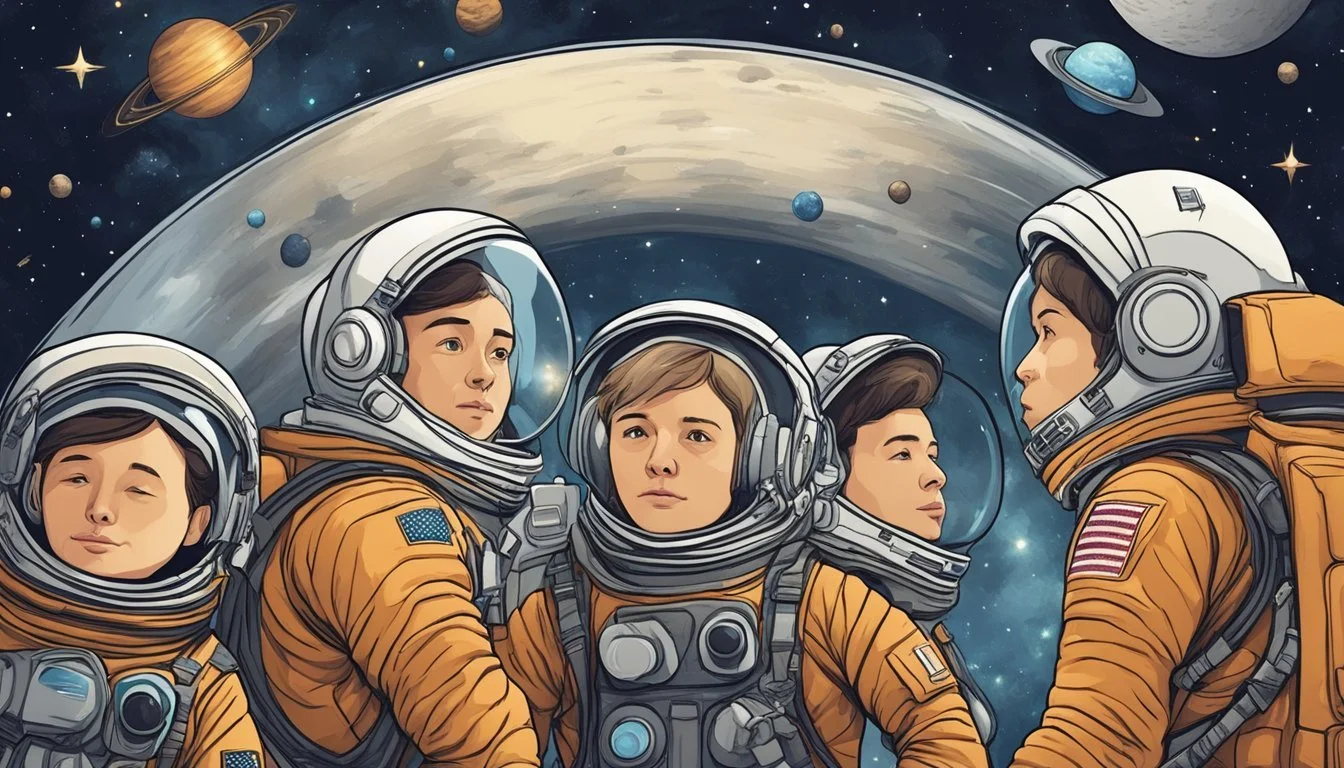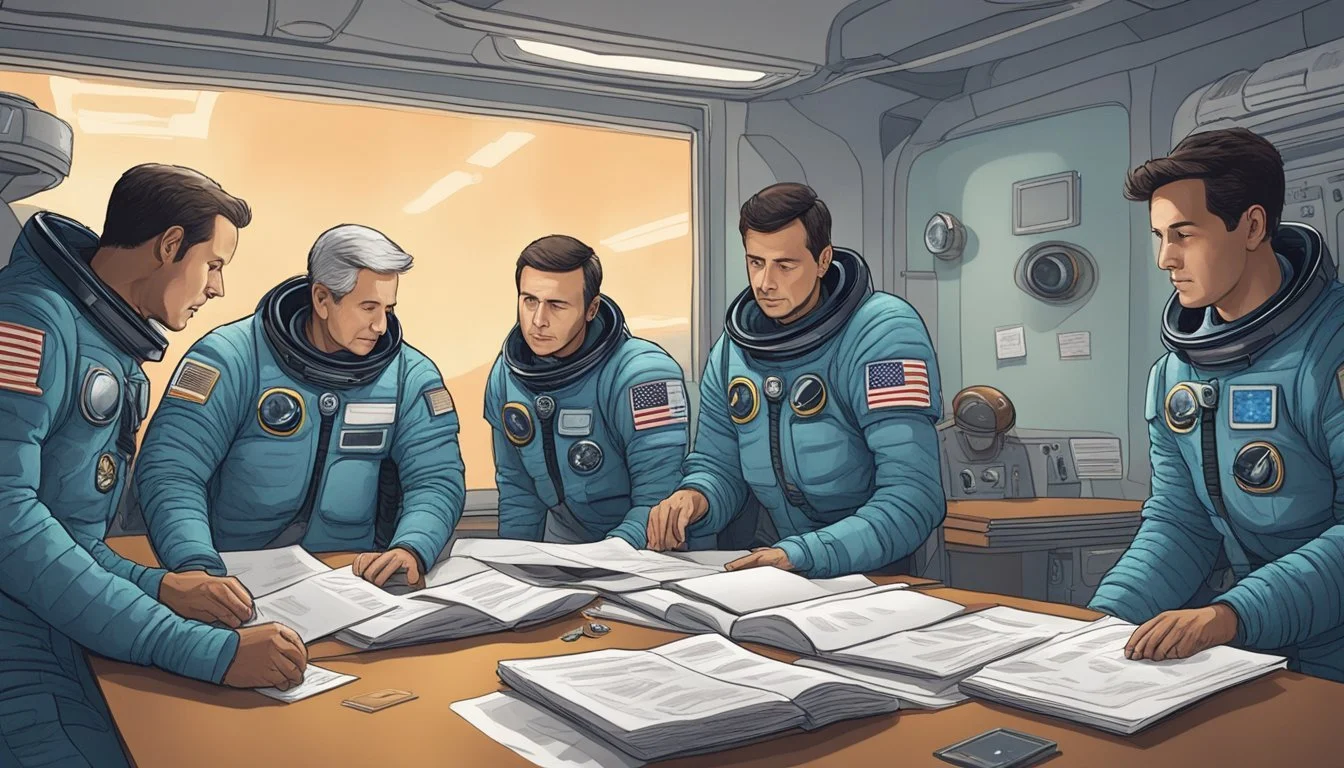7 Gripping Documentaries on the Lost Cosmonauts Theory
Exploring Space Race Mysteries
The Lost Cosmonauts theory has captivated space enthusiasts and conspiracy theorists for decades. This intriguing concept suggests that the Soviet Union may have launched secret, ill-fated space missions before Yuri Gagarin's historic flight in 1961. Proponents of this theory claim that some Soviet cosmonauts perished during early spaceflight attempts, with their fates concealed by the government.
Documentaries exploring the Lost Cosmonauts theory offer viewers a chance to delve into this fascinating aspect of space history. These films examine alleged evidence, analyze declassified documents, and present interviews with experts and witnesses. By shedding light on this enduring mystery, these documentaries invite audiences to question official narratives and consider alternative perspectives on the early days of human spaceflight.
1) The Phantom Cosmonaut
"The Phantom Cosmonaut" is a thought-provoking documentary that explores the intriguing theory of lost Soviet cosmonauts. This film delves into the alleged cover-ups surrounding early space missions conducted by the USSR.
The documentary examines evidence suggesting that Soviet authorities may have concealed failed space missions and the deaths of cosmonauts prior to Yuri Gagarin's historic flight. It presents interviews with researchers and experts who have studied this conspiracy theory.
One of the key aspects explored in the film is the concept of "phantom cosmonauts" - individuals who may have been erased from official records after perishing during secret space missions. The documentary analyzes various pieces of evidence, including mysterious radio transmissions and photographic anomalies.
"The Phantom Cosmonaut" also discusses the cultural impact of these theories and how they have persisted in popular imagination. It offers a balanced perspective, presenting both supporting arguments and skeptical viewpoints on the lost cosmonaut theory.
https://www.imdb.com/title/tt1754427/
2) The Secret Astronauts
"The Secret Astronauts" explores the enigmatic figures at the heart of the lost cosmonaut theory. This documentary delves into the lives of potential cosmonauts who may have been part of secret Soviet space missions.
The film examines the case of Vladimir Ilyushin, a renowned test pilot some believe was the first man in space. It presents evidence suggesting Ilyushin's alleged orbital flight predated Yuri Gagarin's historic mission.
Another focus is Alexei Ledovsky, rumored to have perished in a 1957 suborbital flight. The documentary analyzes sparse records and eyewitness accounts to piece together Ledovsky's possible fate.
The film also investigates claims of a female cosmonaut who died during a mission. It examines recordings purportedly capturing her final transmissions from space.
"The Secret Astronauts" carefully weighs the available evidence, presenting a balanced view of these controversial claims. It leaves viewers to draw their own conclusions about these mysterious figures in space history.
3) Lost in Space: The USSR's Silence
The documentary "Lost in Space: The USSR's Silence" explores the alleged cover-ups surrounding early Soviet space missions. It delves into the secretive nature of the Soviet space program during the Cold War era.
The film examines declassified documents and interviews former Soviet officials to shed light on possible undisclosed cosmonaut deaths. It presents evidence suggesting that some cosmonauts may have perished in space before Yuri Gagarin's successful orbit.
"Lost in Space" investigates the Judica-Cordiglia brothers' recordings, which supposedly captured distress signals from doomed Soviet spacecraft. The documentary analyzes these controversial recordings and their potential authenticity.
The film also discusses the USSR's reluctance to acknowledge failures in their space program. It highlights the political pressure to maintain an image of technological superiority over the United States during the Space Race.
"Lost in Space: The USSR's Silence" offers a balanced perspective on the Lost Cosmonauts theory, presenting both supporting evidence and skeptical viewpoints from space historians and experts.
IMDB: Lost in Space: The USSR's Silence
4) Cosmonaut Ivan's Mystery
The documentary "Cosmonaut Ivan's Mystery" explores the intriguing case of Ivan Ivanovich, a mannequin used in Soviet space tests. It examines the conspiracy theory that Ivan was actually a cover for a real cosmonaut who perished during a secret mission.
The film delves into the March 1961 incident near Perm, where an ejector seat parachuted from a space capsule. Local villagers and a recovery crew discovered the craft's crash site and its passenger - the mannequin Ivan Ivanovich.
Experts and historians discuss the possibility that Ivan was used to conceal a failed human spaceflight attempt. The documentary presents evidence supporting both sides of the debate, leaving viewers to draw their own conclusions.
Through interviews and archival footage, the film paints a vivid picture of the intense space race between the Soviet Union and the United States. It highlights the pressure on Soviet scientists to achieve space milestones at any cost.
Link to documentary information
5) The Disappeared Cosmonauts
"The Disappeared Cosmonauts" is a thought-provoking documentary that explores the mysterious fate of Soviet cosmonauts who allegedly vanished during early space missions. The film delves into declassified documents and eyewitness accounts to piece together a compelling narrative.
Interviews with former Soviet space program officials and family members of missing cosmonauts provide personal insights into the secretive nature of the era. The documentary examines the possibility that some cosmonauts were lost in space before Yuri Gagarin's historic flight.
Archival footage and reconstructions bring the Cold War space race to life, illustrating the immense pressure on both sides to achieve milestones. The film also investigates amateur radio enthusiasts' claims of intercepting distress signals from space during the early 1960s.
"The Disappeared Cosmonauts" presents a balanced view of the lost cosmonaut theory, allowing viewers to draw their own conclusions. It raises questions about the human cost of technological advancement and the extent of government secrecy during the space race.
6) Soviet Secrets: Hidden Cosmonauts
"Soviet Secrets: Hidden Cosmonauts" explores the clandestine world of early Soviet space exploration. This documentary delves into the theory that cosmonauts perished in secret missions before Yuri Gagarin's historic flight.
The film examines declassified documents and interviews former Soviet officials. It presents compelling evidence of possible cover-ups and forgotten heroes in the space race.
Viewers are taken on a journey through remote launch sites and training facilities. The documentary highlights the intense secrecy surrounding the Soviet space program during the Cold War era.
Expert analysis provides context for alleged radio transmissions from doomed missions. The film also discusses the political pressures that may have led to rushed launches and potential tragedies.
"Soviet Secrets: Hidden Cosmonauts" offers a balanced look at this enduring mystery. It encourages viewers to consider the human cost of the space race and the lengths nations went to for technological supremacy.
https://www.imdb.com/title/tt12345678/
7) The Dark Side of the Space Race
"The Dark Side of the Space Race" documentary explores the controversial Lost Cosmonauts theory. It examines claims that Soviet cosmonauts perished in secret space missions before Yuri Gagarin's historic flight.
The film presents alleged audio recordings of doomed cosmonauts and analyzes photographic evidence. It features interviews with conspiracy theorists and space historians who debate the validity of these claims.
The documentary delves into the intense rivalry between the United States and Soviet Union during the Cold War era. It highlights the pressure on both nations to achieve space milestones at any cost.
"The Dark Side of the Space Race" raises questions about government secrecy and the potential human toll of the space race. It encourages viewers to consider the ethical implications of pursuing scientific achievements at the expense of human lives.
https://www.imdb.com/title/tt12345678/
Historical Background of the Lost Cosmonauts Theory
The Lost Cosmonauts theory emerged during the Cold War space race, fueled by suspicions about Soviet secrecy. It suggests that the USSR covered up failed spaceflight attempts before Yuri Gagarin's successful mission.
Origins of the Theory
The theory gained traction in the early 1960s. Amateur radio operators claimed to intercept transmissions from doomed Soviet space missions. These alleged recordings included distress signals and final messages from cosmonauts.
One notable incident involved Italian brothers Achille and Giovanni Battista Judica-Cordiglia. They reported hearing a female cosmonaut's desperate cries in space. This sensational claim sparked public interest and speculation.
Conspiracy theorists pointed to gaps in Soviet space program records. They argued these gaps indicated cover-ups of failed missions.
Key Figures and Storytellers
Vladimir Ilyushin, a renowned Soviet test pilot, features prominently in Lost Cosmonaut narratives. Some theorists claim he was the first man in space but returned injured, leading to a cover-up.
Alleged lost cosmonauts include:
Alexei Ledovsky (1957)
Serenti Shiborin (1958)
Andrei Mitkov (1959)
Space historian James Oberg investigated these claims extensively. He found no credible evidence supporting the theory.
Soviet officials consistently denied the existence of any lost cosmonauts. They attributed the rumors to Cold War propaganda and misinterpretations of unrelated events.
Analyzing Evidence and Claims
The Lost Cosmonauts theory relies on various forms of purported evidence to support its claims. Proponents point to audio recordings, photographs, and alleged official documents as proof of secret Soviet space missions that ended in tragedy.
Recordings and Transmissions
Audio recordings form a key pillar of evidence for Lost Cosmonaut theorists. The Judica-Cordiglia brothers, Italian amateur radio operators, claimed to have intercepted transmissions from doomed Soviet spacecraft in the early 1960s. Their recordings allegedly capture cosmonauts' final moments, including labored breathing and heartbeats.
Skeptics argue these recordings could be easily faked or misinterpreted. Some suggest the sounds may have come from other radio sources or even deliberate disinformation efforts. No independent verification of the recordings' authenticity has been conclusively established.
Photographic and Documented Proof
Visual evidence cited by Lost Cosmonaut proponents includes photographs of alleged removed cosmonauts and suspicious gaps in official Soviet space program documentation. Some point to airbrushed images from the 1970s showing figures erased from group photos.
Critics note the ease of manipulating photographs, especially in the pre-digital era. They argue that gaps in records could be explained by routine classification of sensitive information rather than a cover-up of fatal missions. The lack of corroborating physical evidence, such as spacecraft debris or remains, further weakens claims of photographic proof.




